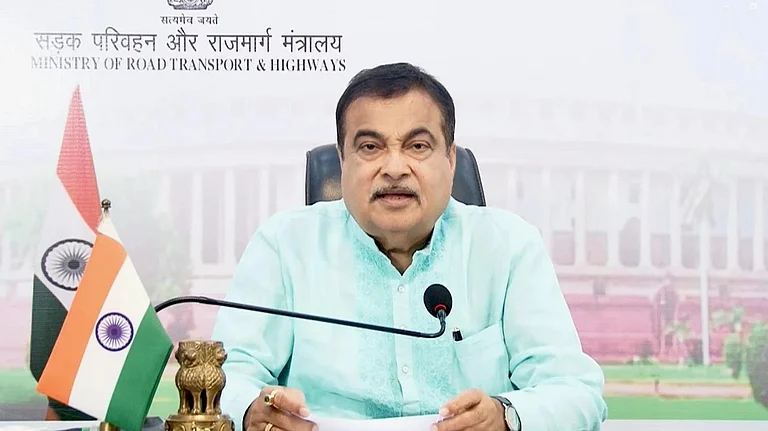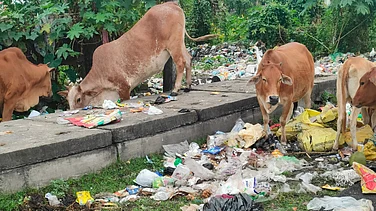India’s agriculture is entering a defining era, where balancing productivity, sustainability and farmer prosperity is more crucial than ever. Biostimulants, crafted from seaweed, humic acids, amino acids, vitamins and beneficial microbes, are showing promise as a future-ready technology. Their adoption is not only driven by science but also shaped by evolving government policies and a shifting market landscape designed to protect both soil and society.
The legacy of the Green Revolution is complex. While it prevented famine and boosted output, the unchecked use of fertilisers has brought costs like depleted soils, water pollution, high greenhouse gas emissions and growing expenses for smallholders. Around 20% of agricultural greenhouse gases today stem from fertiliser use. This backdrop drives the urgent need for alternatives that restore balance without sacrificing yield or resilience.
Biostimulants work differently from synthetic fertilisers or pesticides. They stimulate crop metabolism, root development and stress tolerance, leading to stronger yields and higher quality without exhausting the land. They help Indian agriculture edge closer to an equilibrium of productivity and regeneration; an urgent need as climate change intensifies droughts, heatwaves and erratic rainfall.
Next-Gen Solutions
India’s biostimulant market is booming, projected to triple in demand by 2032 and align with a global market nearing $10bn. Farmers, especially those cultivating high-value and export-oriented crops, are increasingly seeking out these next-generation solutions. For export-driven agribusinesses, biostimulants become critical for entering residue-free and eco-labelled premium markets, while for smallholders, they promise better margins and risk mitigation in the face of climate shocks.
Recognising confusion in the unregulated biostimulants marketplace, the Indian government amended the Fertiliser Control Order in 2021. This brought about:
· Stricter product definitions, field efficacy standards and agro-climatic zone trials.
· Mandatory detailed testing for chemistry and safety.
· A more streamlined but demanding approval process, with only 132 products certified so far, down from over 30,000 previously marketed.
Manufacturers are now required to submit robust, region-specific trial data—a shift that ensures only effective and safe products reach the farmer, and curbs the proliferation of “miracle” claims. The government’s refusal to grant further provisional registrations beyond June 2025 is further pushing the industry towards science-based, evidence-led innovation.
Seaweed-based biostimulants have become sector leaders, representing 41% of approved products. India’s vast 8,000-kilometre coastline holds immense potential, yet current output is less than 0.1% of global seaweed production. Government programmes such as the Pradhan Mantri Matsya Sampada Yojana are trying to unlock this “blue gold”, aiming not just for higher yields but sustainable livelihoods, skills development and empowerment of women in coastal communities. Scaling up will, however, require targeted investment in post-harvest infrastructure, training and reliable supply chains.
Policy to Practice
The policy landscape for biostimulants in India is undergoing a significant transformation. The focus is shifting from provisional licensing towards well-regulated, evidence-backed product approvals, which will enhance the credibility of products and build consumer trust. Concurrently, there is a growing emphasis on green economy initiatives, with investments flowing into blue economy sectors such as seaweed cultivation, climate-resilient agricultural research and the establishment of public-private partnerships. These initiatives are crucial to advancing sustainable agriculture and environmental resilience in the country.
In addition, strengthening extension networks, conducting on-ground demonstrations and providing targeted training are becoming priorities, given that most Indian farmers are smallholders who often lack access to customised knowledge and resources.
Policymakers must also work towards aligning Indian biostimulant regulations with global standards to facilitate exports, build international trust and attract greater investment in research and innovation. By developing stringent regulatory frameworks, promoting green and blue economy projects and enhancing farmer support systems, India can foster a robust biostimulant industry that drives agricultural productivity and sustainability.
Sowing Trust
Farmers remain rightly skeptical due to past experiences with poorly regulated products and uneven access to information and training. The government’s move to restrict provisional entries is complemented by the urgent need to expand extension services; currently, only one agent serves 800–1,000 farmers. Focused outreach, incentives for early adopters, model demonstrations and digital advisory services are now policy targets designed to overcome this trust gap.
India is seeking to catch up with international best practices by enforcing product traceability, streamlining regulatory approvals and targeting eco-label certification for exports. Realising biostimulants’ full potential will depend on continued government resolve, alignment of incentives for research and innovation and building resilient supply chains for both established and emerging biostimulant sectors.
For the move from pilot projects to mass adoption among India’s 138mn farmers, sustained policy support will remain key through investment in quality assurance infrastructure, rapid research translation, farmer-centric communication and incentives for scalable local entrepreneurship. The future of Indian agriculture could be reimagined with a mix of public investment, market leadership and empowered rural communities crafting a green, prosperous and resilient farm economy.
The authors are principal and senior scientist, respectively with ICAR-NIAP, New Delhi.






























